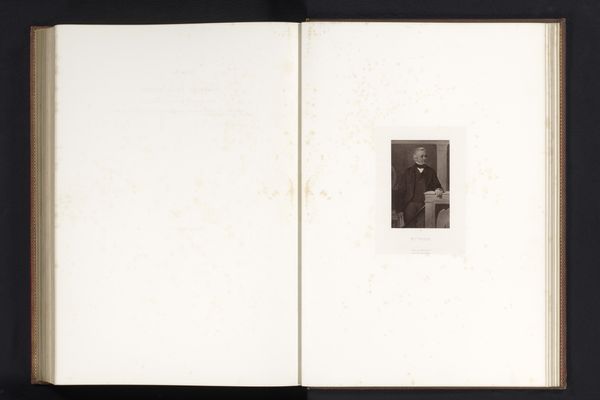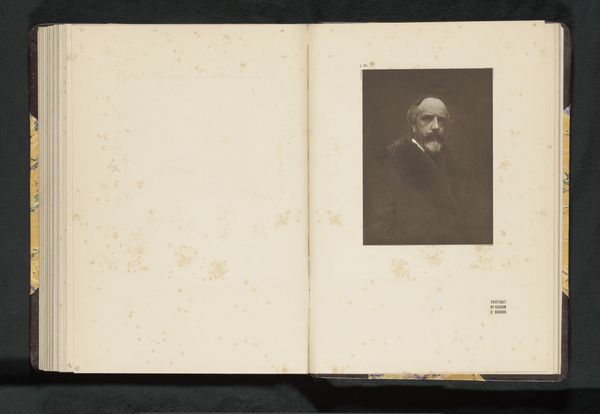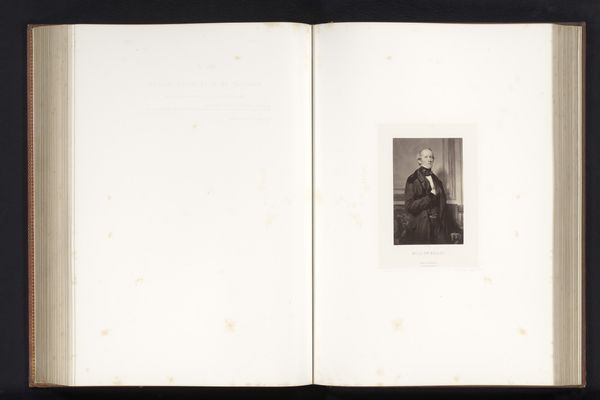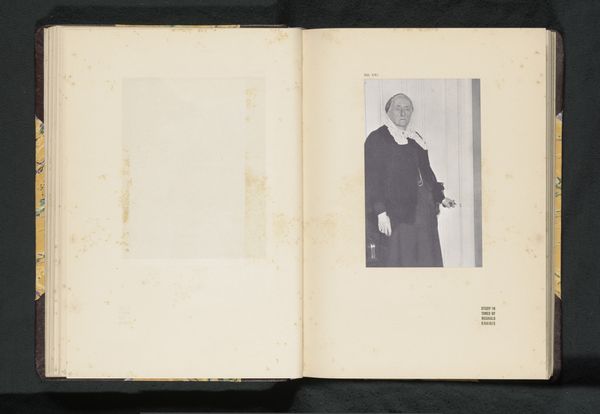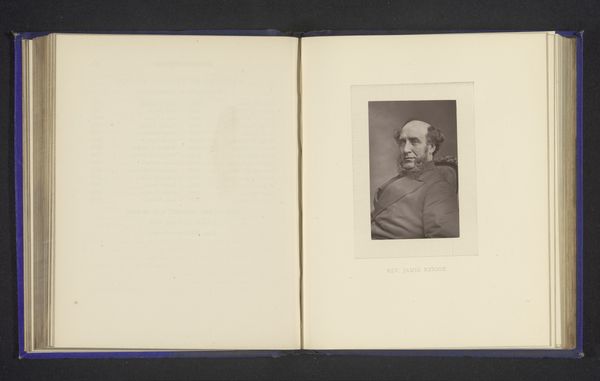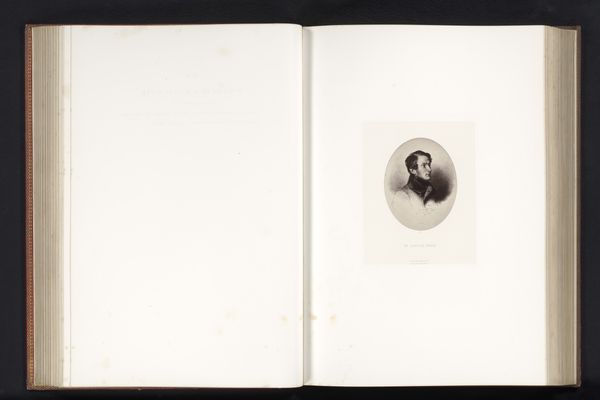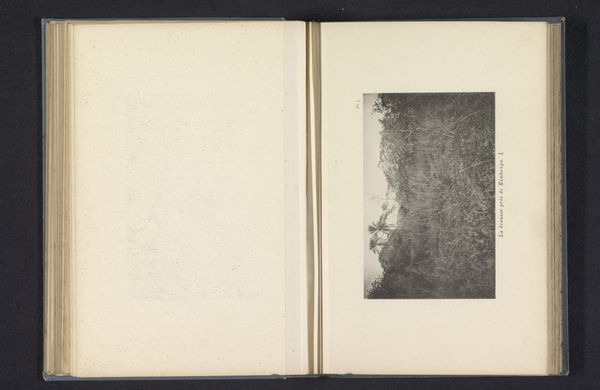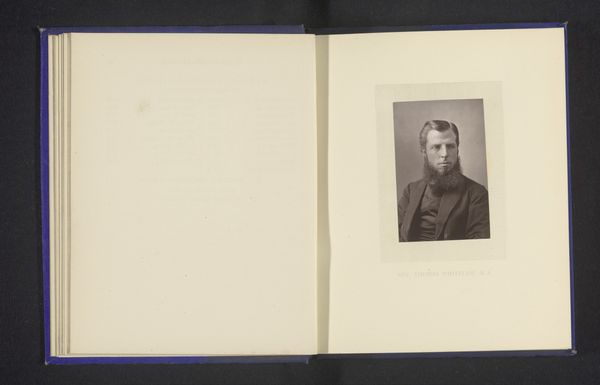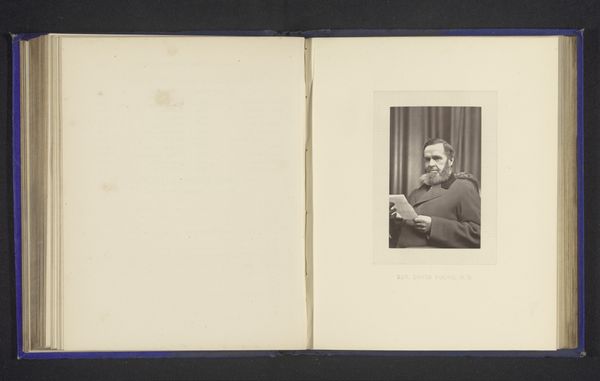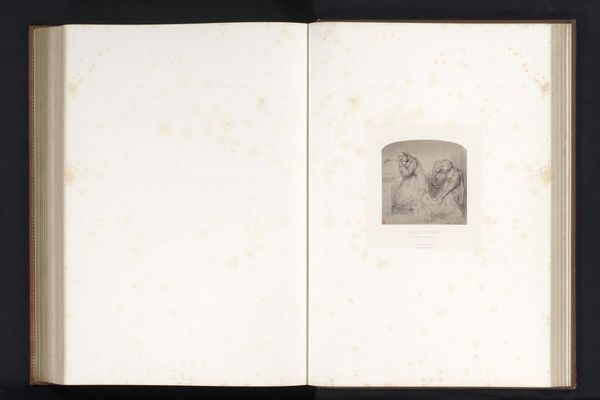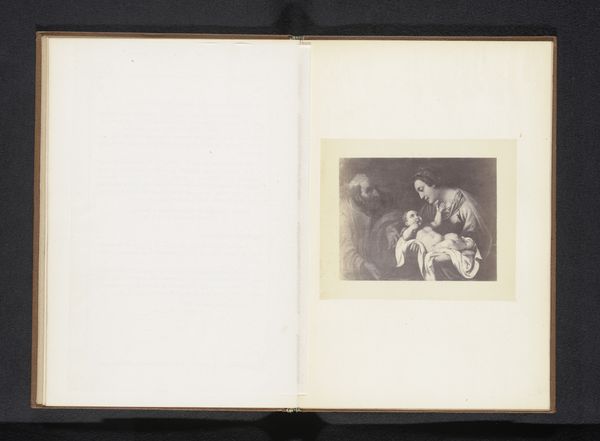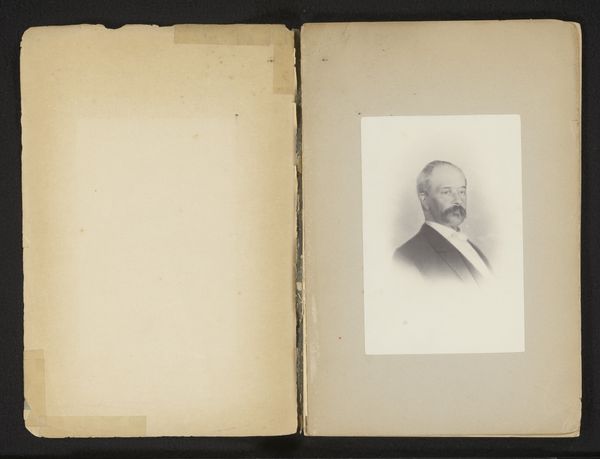
Fotoreproductie van een geschilderd portret van François Guizot door Paul Delaroche before 1858
0:00
0:00
Dimensions: height 163 mm, width 128 mm, height 227 mm, width 190 mm
Copyright: Rijks Museum: Open Domain
Curator: Here we see "Fotoreproductie van een geschilderd portret van François Guizot door Paul Delaroche," a photograph of an etching, made before 1858, by Robert Jefferson Bingham. Editor: My first impression is the severe mood, it feels very somber. The tones are almost entirely monochromatic, except for the aging yellow of the paper it is attached to. Curator: Indeed. Guizot was a prominent French historian and statesman; this portrait would have reinforced his image as a serious intellectual figure. Consider the time, before mass media. Disseminating such an image served to project authority. Editor: It's interesting how the original portrait painting became mediated through two other processes. First, a printed etching and then re-photographed. This imbues it with texture; a handmade feel is further reinforced through its presentation on non-digital, folded, aged paper. Curator: That’s a keen observation about its physical construction shaping its meaning. What’s fascinating is the interplay between its intended message of power and the eventual dispersal of that power through reproducibility. Photography democratized imagery. Editor: There is an unusual sense of isolation of the print. So much white space! Is this meant to further highlight his gaze or the stern set of his mouth? He is not smiling; the man is unamused. The very slight gradations achieved through the etching are marvelous. Curator: And while he projects an aura of intellectual and political strength, its current context framed within the larger art institution changes its role. It's an artifact now, a historical relic divorced from its original intent to shape policy. Editor: Perhaps it’s inevitable. Images change and reflect us instead. Despite its power then, the romantic style reads now more as a human attempt at immortality. Curator: Ultimately it's about legacy. The layered processes this image has undergone allows for multiple perspectives; political tool, an aesthetic object, a document of evolving artistic techniques. Editor: Exactly. What strikes me most is the intimacy of the medium contrasting with the perceived grandeur of the subject. An interesting friction arises.
Comments
No comments
Be the first to comment and join the conversation on the ultimate creative platform.
